Driving the future: How Navixy helps manage electric vehicle fleets
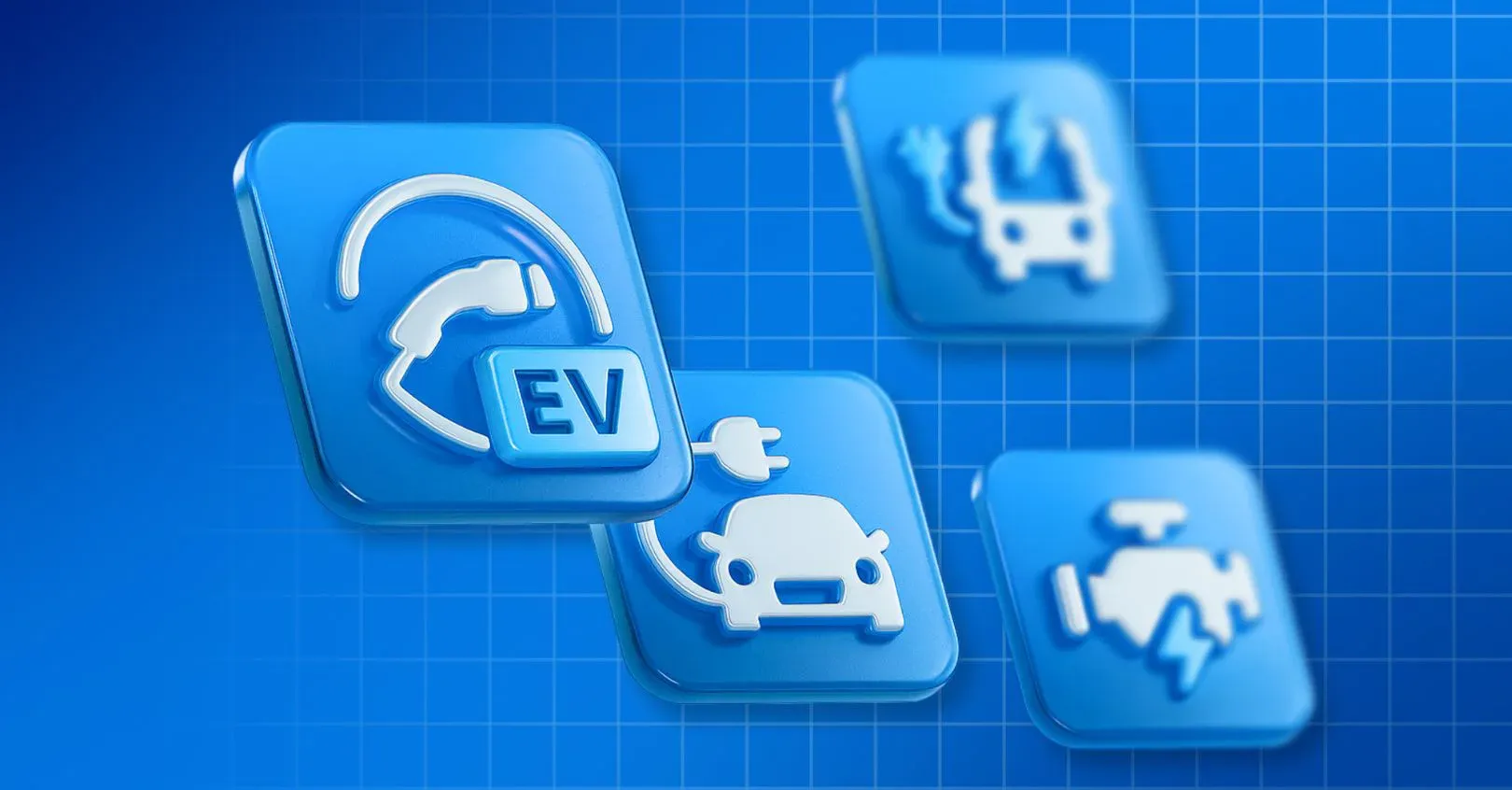
Are you tired of watching your electric vehicle fleet drain your profits faster than a Tesla with a dead battery? You're not alone. While everyone's jumping on the EV bandwagon, most fleet operators are discovering that managing electric vehicles isn't just about swapping gas tanks for batteries. It's a whole new game with rules nobody taught you.
Intelligent fleet management platforms, like Navixy, meet the unique requirements of electric cars and help to navigate this transition with powerful tools designed to manage, monitor, and optimize EV operations. Read the article till the end to get a clear picture of how telematics helps to manage such fleets.
Challenges caused by the inevitable shift to EVs
The global transition to electric vehicles (EVs) is accelerating. According to Bloomberg NEF, electric vehicles will amount to 58% of global passenger transport sales by 2040, with commercial fleets leading this transformation. Among the most notable adopters are fleet-based services like taxis, with London achieving 54% and Oslo mandating 100% electric taxis.
For fleet managers, this shift brings both opportunities and unique challenges. While EVs offer up to 70% lower operating costs compared to traditional vehicles, they also introduce new complexities in fleet management:
- Battery management: Monitoring charge state across dozens or hundreds of vehicles
- Range optimization: Ensuring vehicles can complete routes without charging delays
- Charging infrastructure coordination: Scheduling charging during off-peak hours
- Performance monitoring: Tracking energy efficiency and driver behavior.
These difficulties require specialized solutions, and that's exactly where advanced MRM platforms such as Navixy take the lead role.
Case study from a field: How Navixy supports EV taxi operations
Let's examine how this works in practice with a compelling case study from our experienced partner and the Navixy provider in the Balkan Region Fleet Management Team (FMT). It provides sufficient telematics service to major clients in Serbia, including Coca-Cola, Telekom Serbia, Intesa Bank, and many others. In Podgorica, Montenegro, the FMT team implemented an innovative solution for the taxi service called AVITA, which operates a fleet of Volkswagen ID.3 electric vehicles.
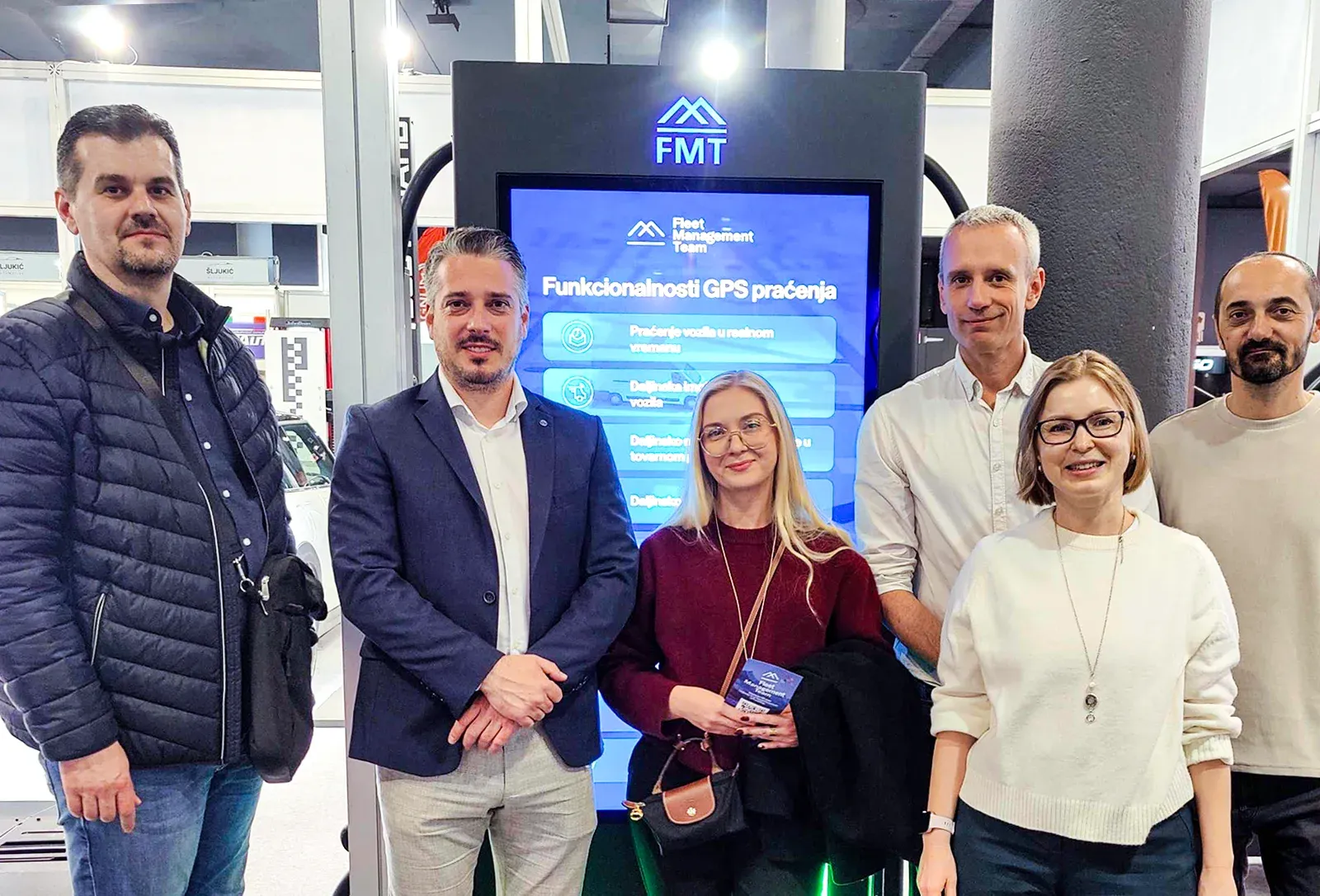 Navixy and FMT teams in Belgrade Motor Show, March 2025
Navixy and FMT teams in Belgrade Motor Show, March 2025
What were the challenges faced by EV-equipped AVITA?
- The customer needed an effective way to monitor battery levels across the fleet.
- Dispatchers required real-time data on the remaining range before the next charge to plan routes efficiently.
- The fleet manager was lacking visibility into which vehicles were currently charging and at which EV stations.
- The company owner wanted to keep track of speed violations and overall driver behavior to ensure safety and accountability.
Navixy: The smart solution to managing an EV fleet
Fleet Management Team (FMT) built their solution using the Navixy platform and the hardware Teltonika FMC150 with LVCAN adapters to capture critical EV-specific data directly from the vehicles' systems. This hardware configuration, paired with Navixy’s fleet management platform, delivered unprecedented visibility into the fleet's operations.
EV-specific parameters captured by Navixy through the CAN bus:
- Vehicle speed (AVL_ID 81)
- Throttle position (AVL_ID 82)
- Mileage (AVL_ID 87)
- Battery level (AVL_ID 152)
- Remaining distance (AVL_ID 866)
“This approach allows us to provide clients with access to essential data, such as speed, mileage, battery level, etc., directly from the vehicle’s CAN BUS. As a result, the customer can have live data to manage the fleet more efficiently and deliver a better customer experience. Mirko Mitrovic, Head of FMT Logistics Solutions
Navixy features adopted by AVITA:
Live location of the vehicles: Live monitoring of every taxi vehicle.
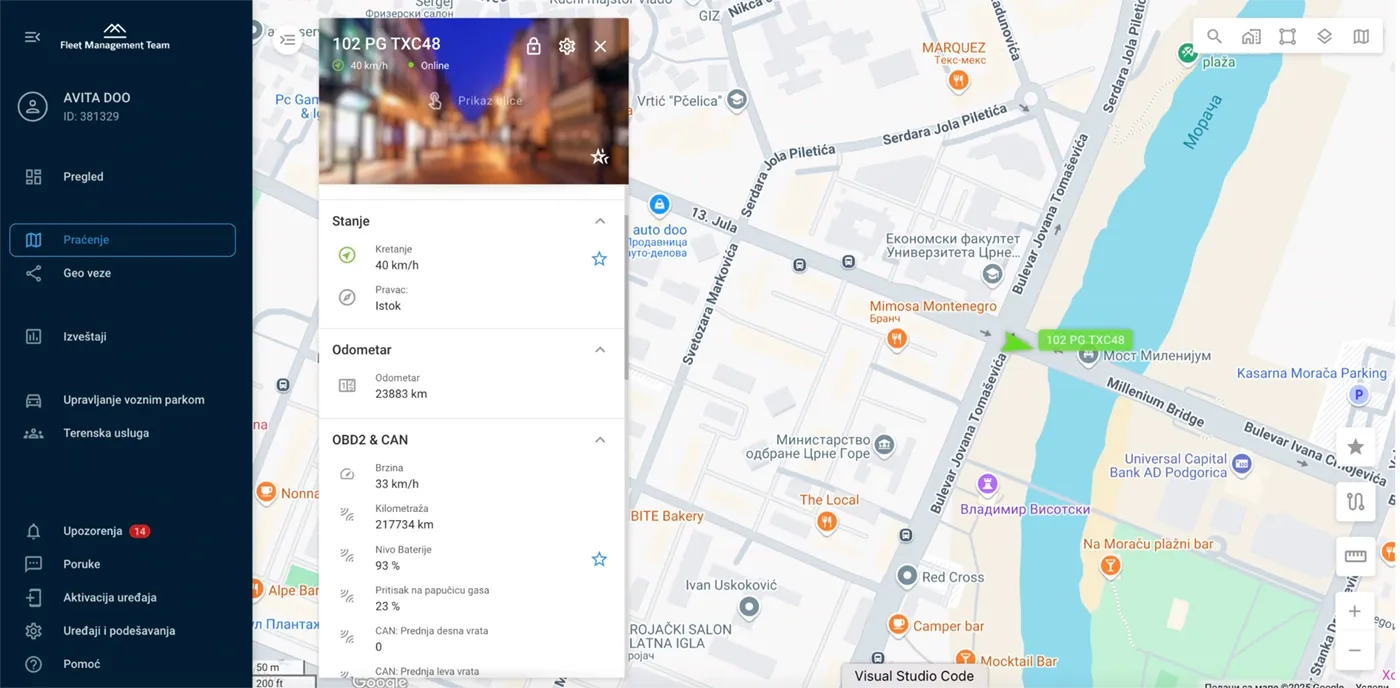
Real-time battery monitoring: Live tracking of each vehicle's battery level in the list view.
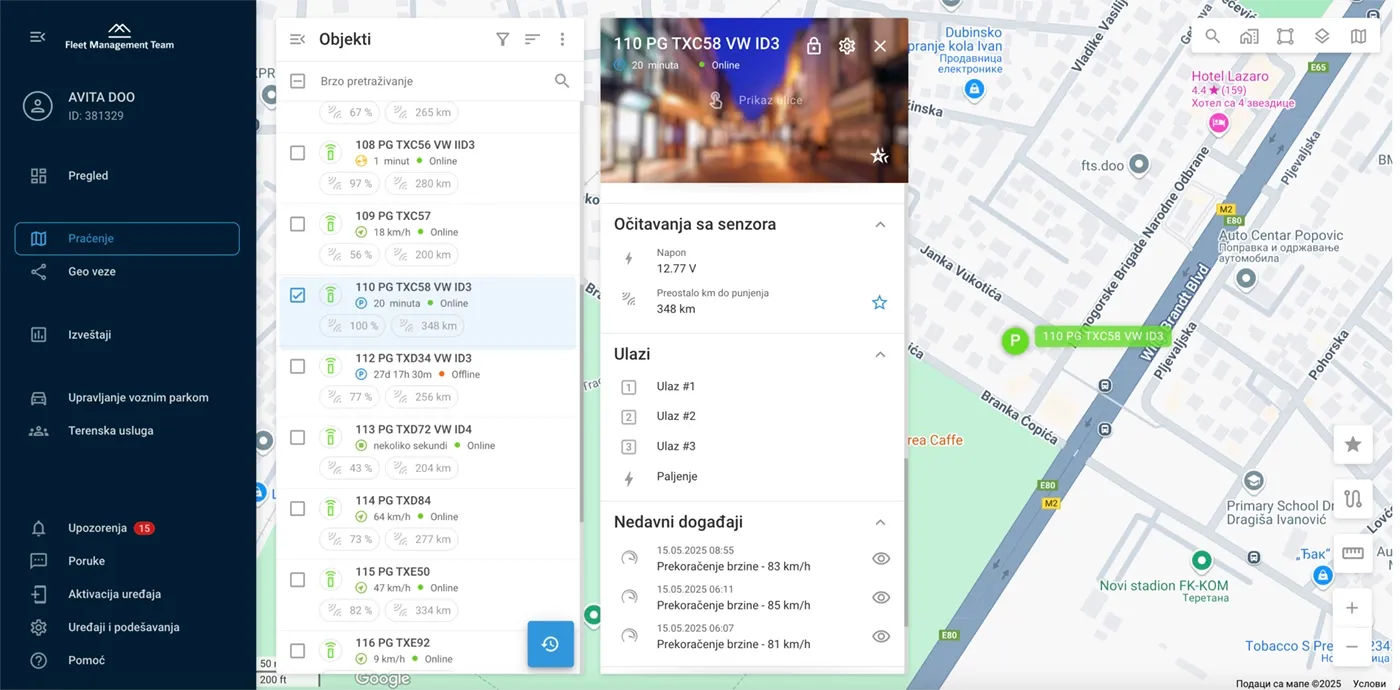
Predictive range analytics: Number of kilometers remaining before the next charge is required.

Custom alert systems: Automated notifications for low battery level, charging events, and excessive idling.
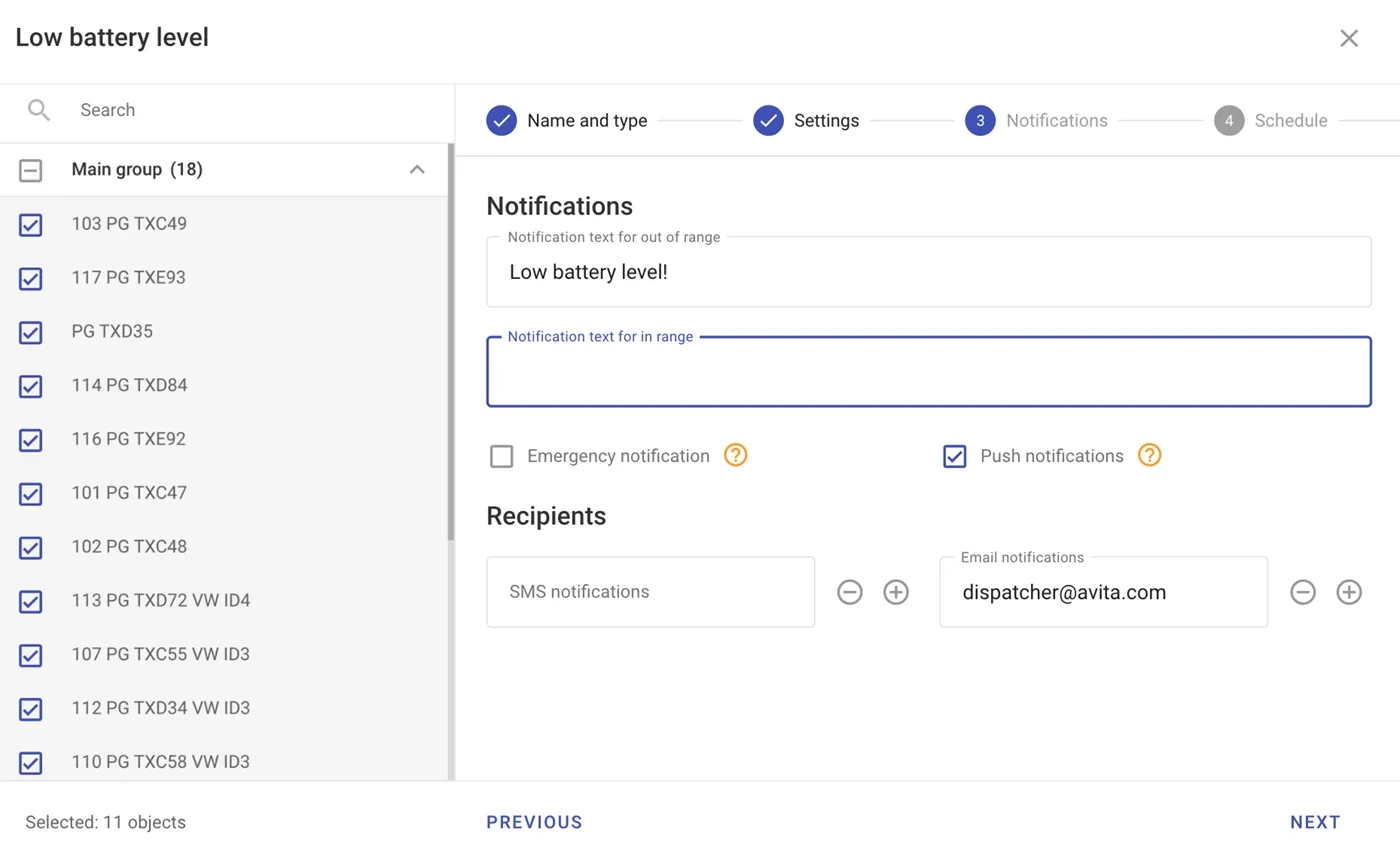
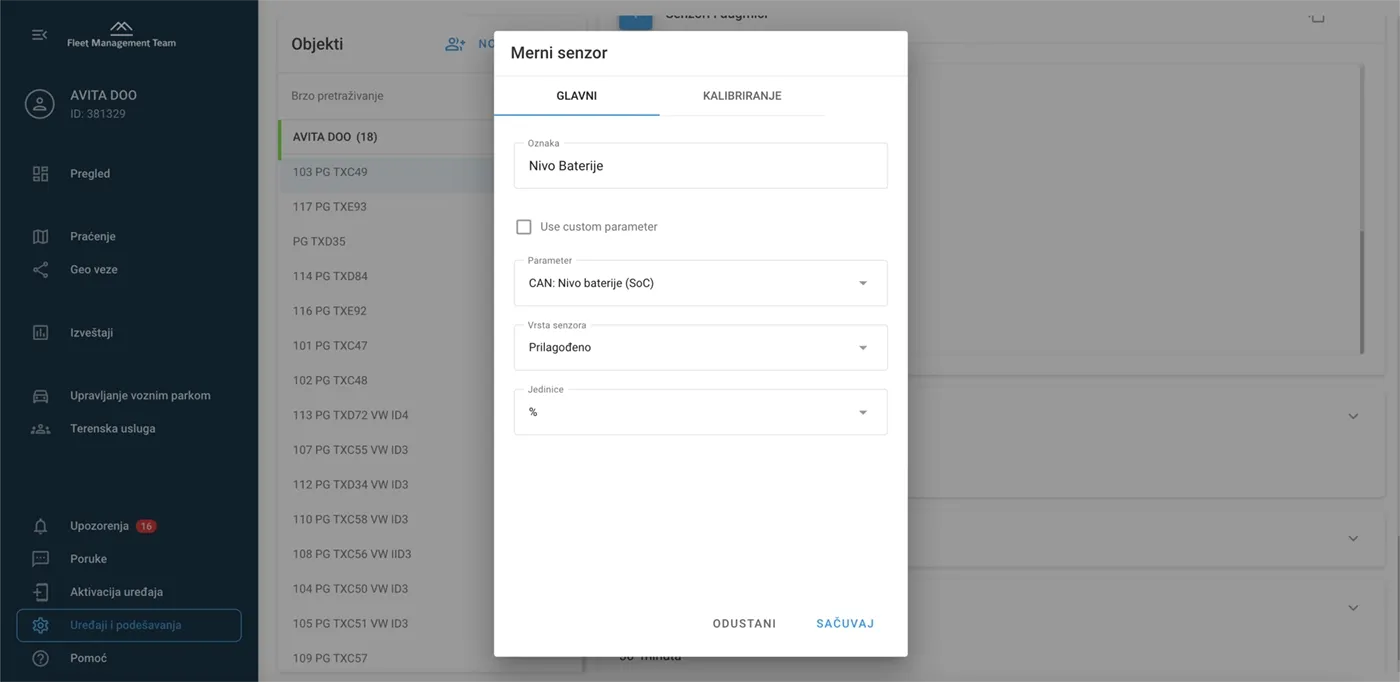
Speeding monitoring with Speeding alerts and the Eco-driving report to encourage efficient and safe driving.
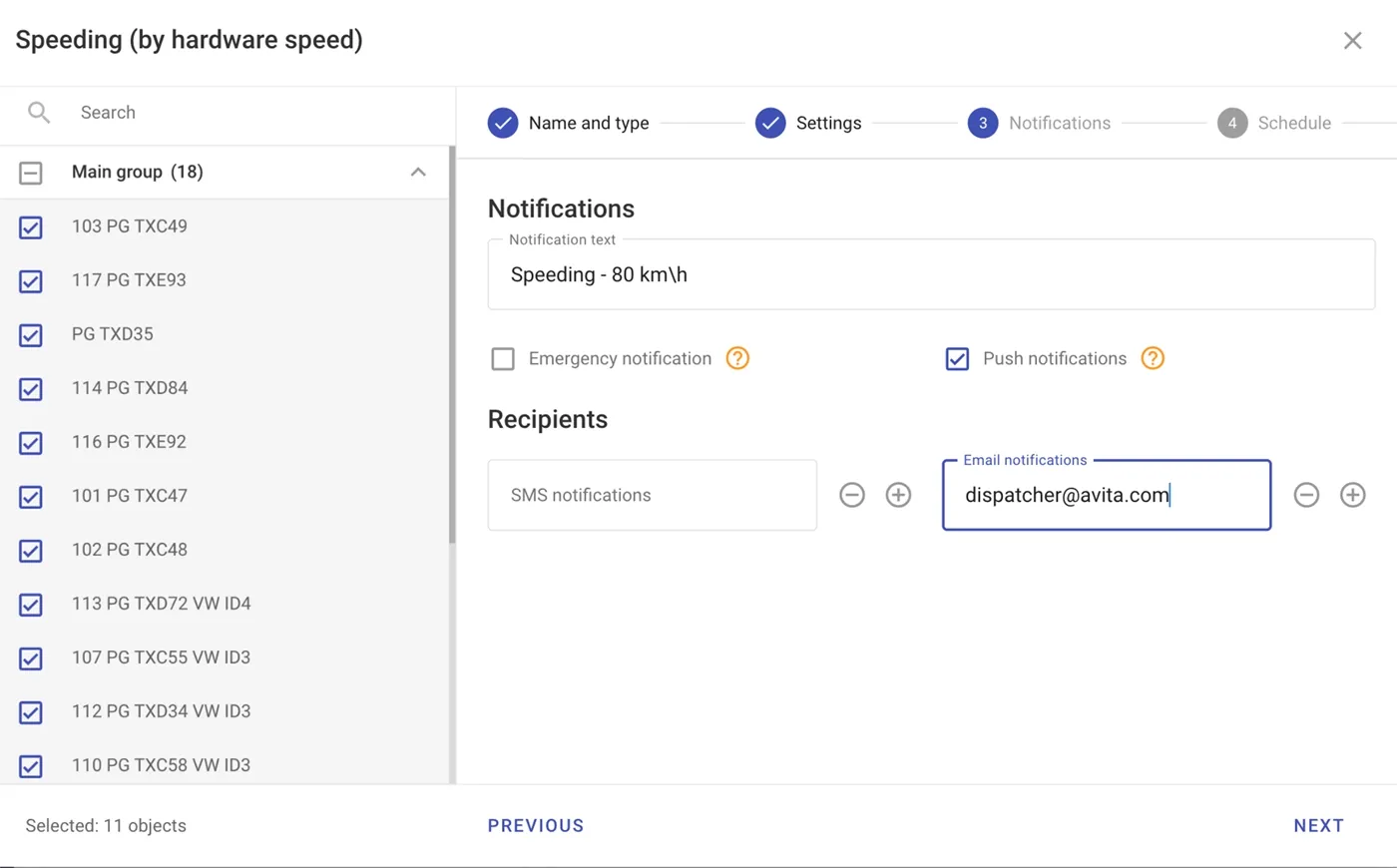
Charging stations geofencing: Automatic detection of vehicles entering or leaving EV charging stations.
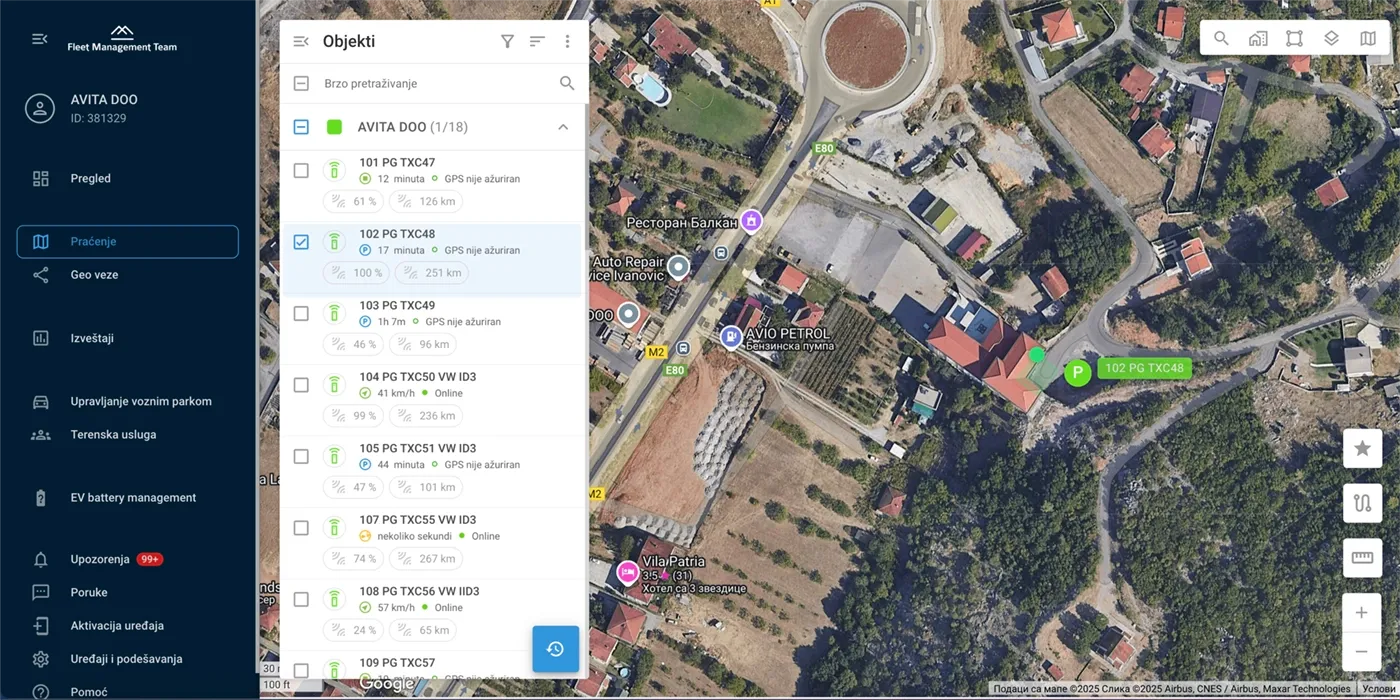 Route history and performance analytics
Route history and performance analytics
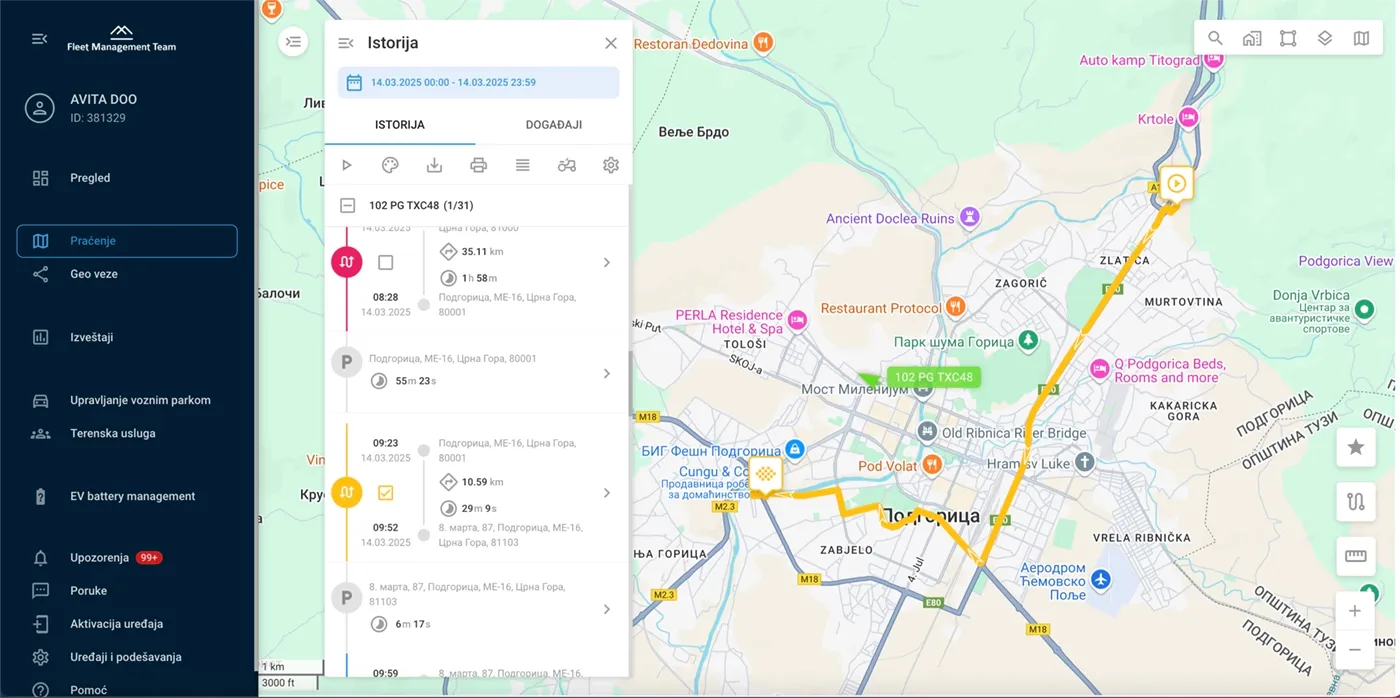
Navixy reports (Vehicle sensors report, Trip report, Event report) to analyse historical data on trips, battery level, and check all notifications during the period.
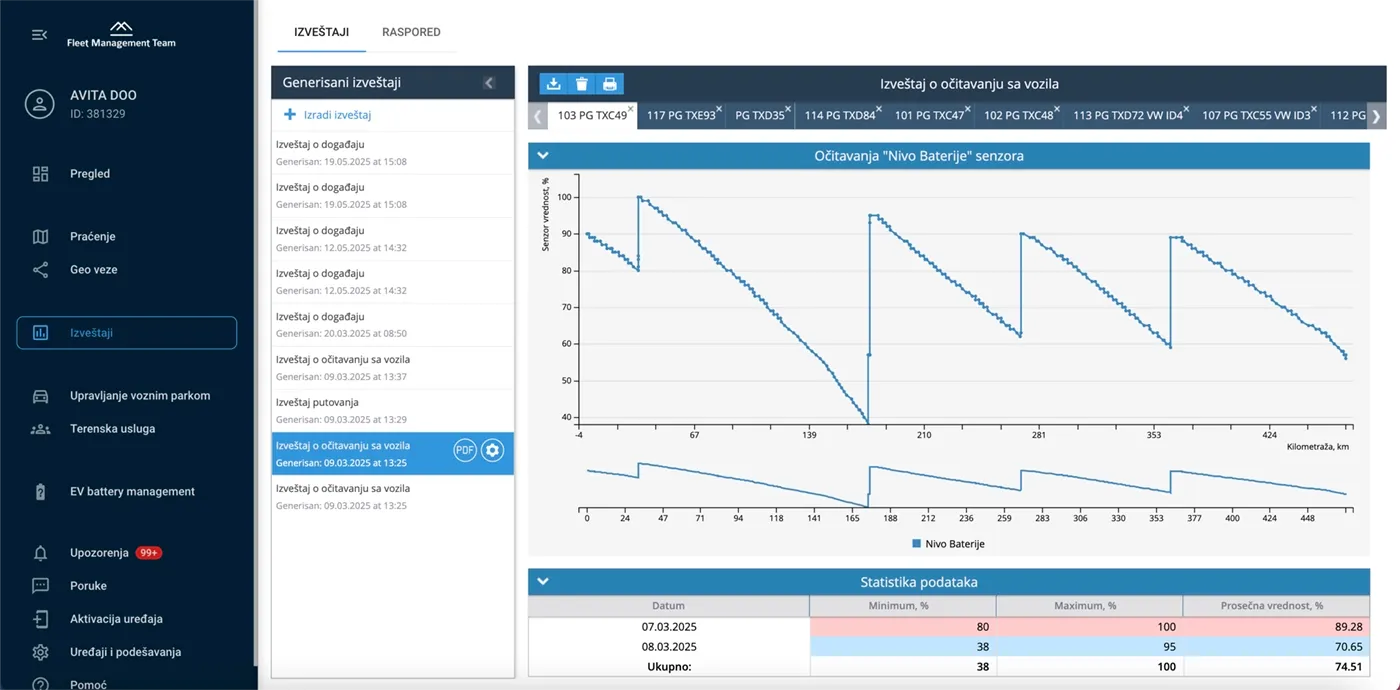
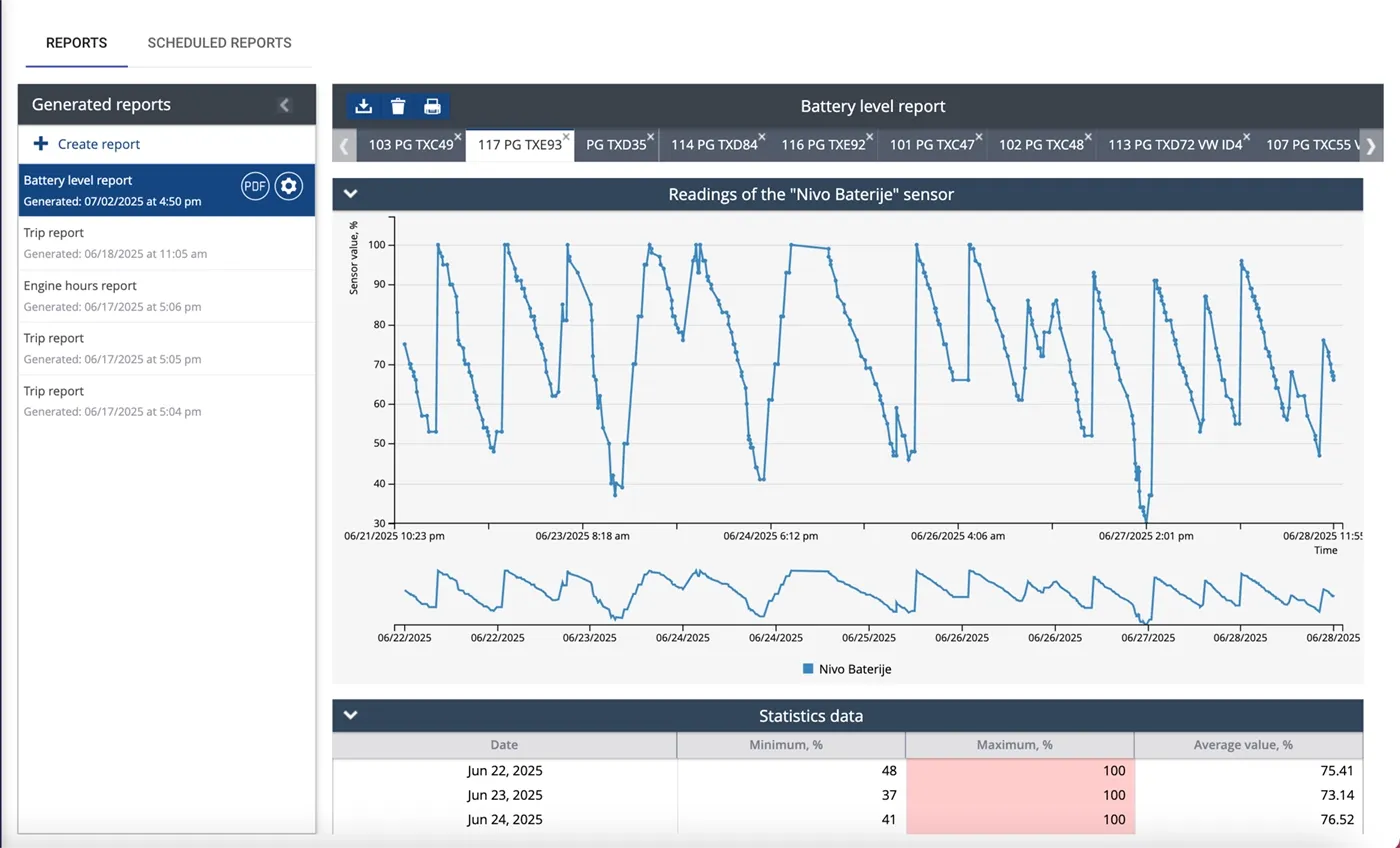
EV Battery management dashboard: A customised dashboard, developed by FMT with Navixy API.
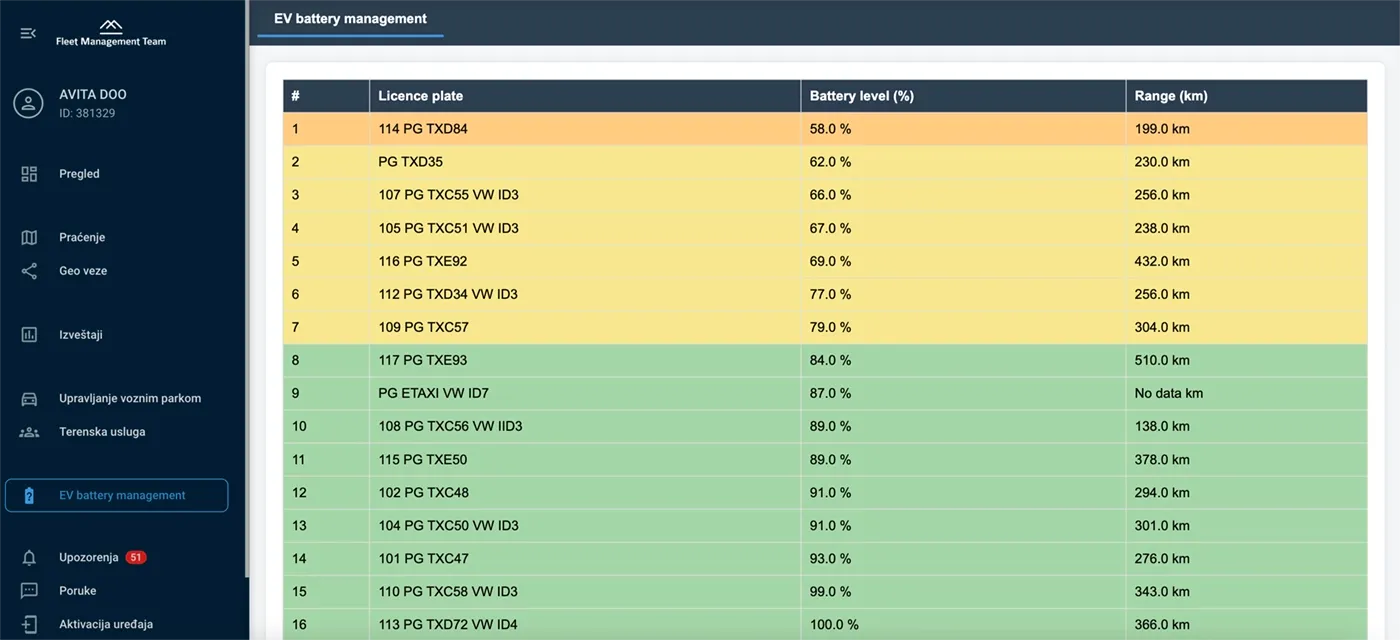 The customer wanted to have maximum visibility in presenting information about everything related to the fleet battery level. To fulfill the requirements, the FMT engineering team deployed their own EV battery management dashboard, which they developed using the Navixy API. The application provides the users with a ranking list of vehicles that updates every 60 seconds and shows real-time information on the current battery level and on the remaining distance left till the next charge.
The customer wanted to have maximum visibility in presenting information about everything related to the fleet battery level. To fulfill the requirements, the FMT engineering team deployed their own EV battery management dashboard, which they developed using the Navixy API. The application provides the users with a ranking list of vehicles that updates every 60 seconds and shows real-time information on the current battery level and on the remaining distance left till the next charge.
How can you make your application interact with Navixy and request all the data you need? Refer to the Navixy API documentation for comprehensive information here.
How to add your own application inside the Navixy User account? Check out Navixy User applications and provide your customers with a unique user experience.
The EV fleet management that exceeds expectations
The taxi service Avita has stated that the Fleet Management Team’s solution driven by Navixy helped to significantly reduce the time previously needed for monitoring and managing vehicles as well as to manage the battery charging process.
Navixy leverage delivered remarkable improvements across multiple dimensions of the taxi operations:
1. Drastically reduced downtime
With real-time battery monitoring and predictive range analytics, vehicles are now charged strategically before reaching critical levels.
2. Optimized energy usage
This was achieved by monitoring driving behaviors and reviewing Eco-driving reports. Drivers now compete for higher eco-scores, creating a culture of responsible behavior that translates directly to operational savings.
3. Enhanced Charging Management
The intelligent charging schedule coordination ensures vehicles are charged during off-peak hours when electricity rates are lower. This optimization alone has also reduced charging costs.
4. Improved driver confidence
Range anxiety, a major concern for EV drivers, almost entirely disappeared. With accurate range predictions and charging station locations integrated into their workflow, drivers reported significantly higher job satisfaction and reduced stress.
5. Superior Customer Experience
AVITA reports a total elimination of interruptions due to battery-related issues. This directly influences customer satisfaction scores and shortens the taxi arrival time. After all, this is one of the main competitive advantages for any taxi service!
"The transformation has been remarkable. What was once a source of operational headaches has become a competitive advantage for the AVITA fleet. Our client now runs one of the most efficient EV taxi services in the region, with uptime and reliability metrics that surpass even their previous combustion fleet." Vukašin Bijelić, The Fleet Management Team's director
As the next step the FMT plans to integrate the eDrive platform to the Navixy via API. That will help to enable the applications to work together and provide clients a comprehensive EV management system enriched with all the relevant data offered by both platforms.
Final thoughts: Transforming EV fleet challenges into competitive advantage with Navixy
The transition to electric vehicles represents both a logistical challenge and a strategic opportunity for taxi service, as well as rental and leasing businesses. Navixy is evolving to support these changes through real-time insights, automation, and system integration.
Currently Navixy supports multiple EV-compatible devices, including:
- OBD devices paired with vehicle-specific EV adapters, for example Teltonika FMB001, FMx003, and FMx00A.
- CAN devices, such as Queclink, Ruptela, Teltonika, Suntech, Xirgo and many other brands, which are capable of reading CAN data directly from the vehicle.
Even more devices are planned for integration into Navixy. Soon, our team will be happy to announce a new EV vehicle device integration for Teltonika FTC305. Stay tuned and follow our announcements.
Contact us to discover how our platform can help you optimize operations, reduce costs, and deliver exceptional service with your electric vehicle fleet.
